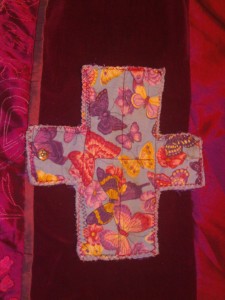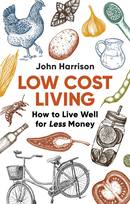This is an area that is rapidly expanding as people realise that products created for ease of use are not necessarily the best for you or the environment.
Tampons and sanitary towels dominate our landfills and are regularly flushed down the toilet ending up on beaches are the sea bed. There have been links found between dioxins in tampons and the condition endometriosis as well as the more common link with TSS – toxic shock syndrome. Sanitary towels have a common side effect of thrush as well as the chemicals used to reduced odour coming into direct contact with your skin leading to dryness and soreness at a time when you really just want to be comfortable.
There are now more readily available natural tampons and towels. These are not bleached or full of chemicals and are an alternative for those who want the convenience of a throw away product without the personal damaging effects, but these do not relieve the environmental impact.
 Reusable sanitary products are becoming very popular, with more websites and stores stocking various options as well as detailed information about how to make your own versions. The period cup in the form of the Moon Cup, Diva Cup or many other options now on the market is a soft cup made from silicone rubber and is worn internally to collect menstrual fluids. It doesn’t dry your internal walls be absorbing natural fluids in the same way as a tampon and it will hold around 30ml of fluid so last longer than a super tampon so is good for those with heavy flows. They come with instructions of how to insert, and although it does take one cycle to get practised at using the cup, once you are used to inserting and removing it is far more comfortable than tampons and does not cause irritation and is not linked with TSS. Although the initial cost is about £15-20 a reusable cup will last for up to ten years with proper care. During your cycle remove, wash and reinsert or if you are out and about take some tissue to the bathroom with you and wipe out the inside before reinserting. At the end of your cycle sterilise in an open pan of boiling water for five minutes.
Reusable sanitary products are becoming very popular, with more websites and stores stocking various options as well as detailed information about how to make your own versions. The period cup in the form of the Moon Cup, Diva Cup or many other options now on the market is a soft cup made from silicone rubber and is worn internally to collect menstrual fluids. It doesn’t dry your internal walls be absorbing natural fluids in the same way as a tampon and it will hold around 30ml of fluid so last longer than a super tampon so is good for those with heavy flows. They come with instructions of how to insert, and although it does take one cycle to get practised at using the cup, once you are used to inserting and removing it is far more comfortable than tampons and does not cause irritation and is not linked with TSS. Although the initial cost is about £15-20 a reusable cup will last for up to ten years with proper care. During your cycle remove, wash and reinsert or if you are out and about take some tissue to the bathroom with you and wipe out the inside before reinserting. At the end of your cycle sterilise in an open pan of boiling water for five minutes.
Cotton sanitary pads have again started to see resurgence in popularity. These became unpopular with the creation of disposable pads and tampons in the 1960’s/1970’s onwards and are still viewed by some as an antique method of menstrual wear. The reality is in fact very different. Cotton pads are more comfortable, cheaper and safer than disposable methods as they reduce infections such as thrush which can be caused by disposable pads. As you wash them you control the chemicals that come into contact with your body and they cannot be seen under clothes as they can be made as thin as a disposable pad.
There are many online suppliers with pretty and organic versions as well as sites that show you how to make your own. They attach to your underwear just like a disposable pad, but with a popper under the brief and they last longer and are very useful for night-time use or heavy cycles. There are also handbag carriers that are compact and can be used to carry a spare and then put in your used pad, with protective and scent resistant linings, so you can use when out of the house. As you can see from the above photo you can make them in a very simple design yourself with the use of a sewing machine and some pretty fabrics. I will try to source a good design for and pot onto the site for those interested in making them themselves.


Leave a Reply